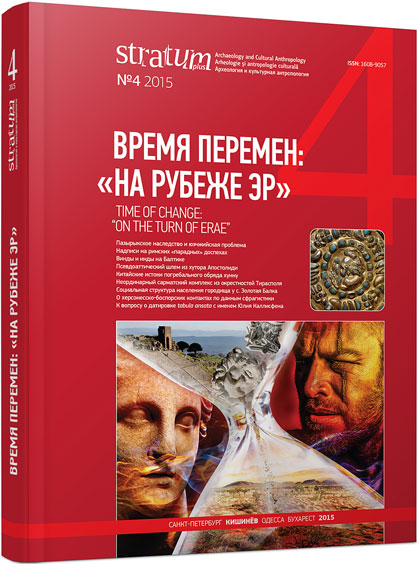О политической организации сарматов на рубеже эр
On Political Organization of Sarmatians between Two Eras
Author(s): Anatoly S. SkripkinSubject(s): History, Archaeology, Political history, Social history, Ancient World
Published by: Издательский дом Stratum, Университет «Высшая антропологическая школа»
Keywords: steppes in the south of Eastern Europe; 2nd century BC — 2nd century AD; Sarmatians; political organization; chiefdoms; social status
Summary/Abstract: Politically the Sarmatian world was never unified. The Aorsi, the Siraces, the Roxolani, the Alani were independent political entities having their own rulers. They were often allies of opposing parties. The degree of centralization of nomadic communities depended on their relations with agricultural civilizations. The supreme level of ancient nomadic organization was a supercomplex chiefdom (nomadic empire). A classic example of such chiefdom is a nomadic association headed by the Hunnu, which emerged as a result of the confrontation between nomads and the Chinese centralized state. In steppe areas in the southern part of Eastern Europe, where Sarmatians lived, there were no large state entities equal to ancient China. Unlike China, ancient colony towns and the Bosporan Kingdom had limited economic potential. When sorting out problems in their relationships with these state entities, Sarmatians had no need to create associations equal to nomadic empires. Written sources allow us to characterize separate Sarmatian groups as complex chiefdoms consisting of several simple chiefdoms.
Journal: Stratum plus. Археология и культурная антропология
- Issue Year: 2015
- Issue No: 4
- Page Range: 73-83
- Page Count: 11
- Language: Russian
- Content File-PDF

